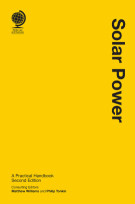
1. What are the main risks that project sponsors need to think about in starting new projects?
One of the key messages to emerge from the book is that project risk needs to be analysed and acted upon holistically. This is easy to understand and demonstrable in project execution. However, it is often difficult to apply within the ‘siloed’ structure of business functions and business units of many global enterprises. Herein lies another key message from the book: many project risks are within the control of the project rather than a collection of ‘external’ phenomena. On its face, this seems counterintuitive. Risks ‘internal’ to a project, such as deficiencies in governance structure, should be those most capable of being managed. Yet time and again, it is internal risks that pose the greatest challenges to projects, whether energy infrastructure or otherwise. This point was recently underscored by Exxon’s chief executive, Rex Tillerson, who suggested that the Deep Water Horizon disaster was caused by “a breakdown in management oversight of that well”. In addition, while, Risk and Energy Infrastructure has a sub-focus on cross-border dimensions, the risks discussed may be found in most energy infrastructure development projects. In other words, the need for a holistic approach to project risk is not a feature limited to cross-border projects or emerging markets.
2. What are those dimensions of risks that merit particular attention when looking at cross-border projects?
Energy markets over the last decade have tended to reflect increasing dislocations between supply and demand. While new hydraulic fracturing technologies are making shale gas and oil commercially recoverable and will start to geographically realign supply and demand (particularly in the United States), remaining lower-cost hydrocarbon reserves are concentrated in the Middle East, North Africa and the former Soviet Union. With the main consuming markets in North America, Europe and increasingly Asia, the distances separating production from consumption will require the financing, construction and operation of cross-border energy transportation infrastructure. This includes oil and gas pipelines and related facilities, as well as liquefied natural gas facilities and maritime transport. There are particular dimensions of risk that are unique to cross-border projects. How each host state chooses to assess the fiscal revenues generated, the impact on competition and how the state applies its legal and regulatory regime will create risks that may render project economics non-commercial. Moreover, given the scale and often the geopolitical importance of many cross-border projects, risks associated with international maritime transport, physical security and politics also need to be taken carefully into account. Various chapters in the book assess the cross-border dimensions of project risk and offer a wide range of risk mitigation tools that have been applied in actual projects around the world.
3. How can sponsors and their advisers prepare themselves to address these risks?
Three basic observations are worth making to project sponsors and their advisors. First, project risks must be understood within the context of a project’s 30 to 40-year economic lifespan. Project personnel can overlook this, as they are frequently replaced over the various phases from pre-feasibility and business development to project execution and operations. This frequency in personnel change-out also tends to drive a ‘segmented’ view of project development. This perspective is often entrenched through management ‘performance contracts’ that reward milestone achievements regardless of risks that may be embedded, leaving potential threats for successors to deal with in subsequent stages of project development. A longer-term view of projects is harder still for financial sponsors, which tend to view projects as assets with a focus not on sustained performance quality, but on the exit or liquidity event. The chapter on technical and operational risk reminds us of the prudence of another perspective. When value is assessed - for example, in an M&A context - due diligence needs to examine the workforce, leadership and culture dimensions of the organisation along with the technical merits of the asset being acquired.
Second, project risk must also be viewed holistically, with individual risks identified and managed early on in a project’s lifecycle. As noted in the chapter on project management, decisions taken early on have the greatest overall project impact at the least overall cost. When decisions are properly informed by holistic risk assessment and risk management is front-end loaded and sustained, overall project risk is reduced.
Finally, there remains a bias in the oil and gas industry - and perhaps rightly so - towards the engineering and sub-surface specialisations. From this perspective, risks are viewed first and foremost as technical matters with cost implications. Enterprise risk management systems are designed accordingly. Yet so many dimensions of non-technical and non-financial risk can have significant implications on the business and its external impacts. While the book certainly includes assessments of the technical dimensions of risk, it attempts to collect together perspectives on risks as viewed through the eyes of various professionals. By collating these perspectives in a single volume, a broad-spectrum assessment of risk is provided - the very perspective that project sponsors and their advisers need to have.
4. What is the market for the development of new energy infrastructure projects?
The projected quantity of investment required over the coming decades in new energy transportation infrastructure alone, as well as the replacement of ageing infrastructure, is simply vast. Some of the investment will be driven by market needs associated with linking increasingly dislocated supply to demand. Other investment will respond to demand shifts as emerging markets develop and mature economies diversify their energy mix away from nuclear and towards gas and renewables. Still other investments - in particular those led by states - will be committed to satisfy strategic security of supply concerns, or to fulfil a desire to dominate the supply of hydrocarbons to certain regions. There will also be a need for investment to follow new production frontiers in the Arctic and ultra-deep water, and to known production areas with heavy oil deposits. Finally, there will be a need for investment in those areas of the Middle East and Africa that are emerging from devastating conflict and are now in need of building anew or rebuilding energy infrastructure.
5. What are the main challenges?
The development, financing, construction and operation of energy infrastructure is typically long-term, high magnitude and enormous in scale. Given the volatility within global financial markets and geopolitics, it is tempting to assume an excessively risk-averse stance. After all, witness the roller-coaster oil price from July to December 2008 to today. In addition, the price of natural gas in North America and Europe was significantly impacted by the advent of commercial shale gas production following the onset of the global financial crisis in 2008. Many European gas companies are now left holding high-priced long-term contracts. Nevertheless, while unknowns will always remain, the forward implementation of energy infrastructure projects fulfils genuine long-term needs. Provided that a project’s economic assumptions are properly stress-tested and a holistic perspective on risk is adopted, the formidable challenges posed by project risk can be successfully met.







